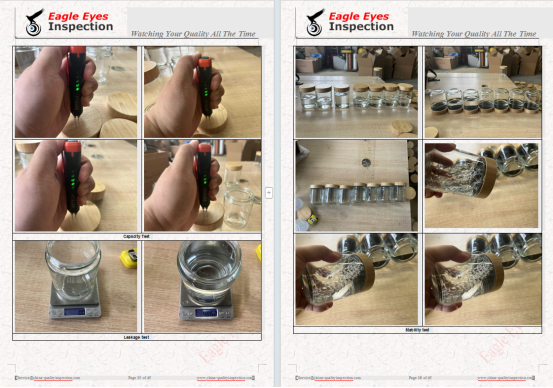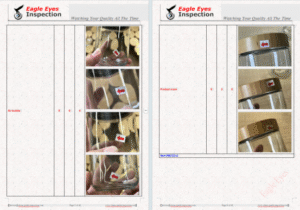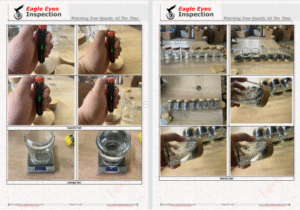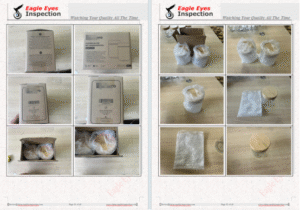
Key Inspection Points for Glass Bottles
1. Dimensional Checks
Height, Diameter, and Neck Finish
– Verify conformity to technical drawings.
Capacity/Volume
– Ensure correct fill volume (measured by water or calibrated tools).
Wall Thickness
– Check uniformity using ultrasonic or manual measurement.
Weight
– Confirm consistency with approved samples.
2. Visual & Surface Quality
Cracks, Chips, or Scratches
– Inspect under proper lighting (LED inspection tables preferred).
Bubbles, Stones, or Inclusions
– Check for defects in glass transparency.
Mold Seams & Surface Smoothness
– Ensure seams are not sharp or excessive.
Color Consistency
– Compare against Pantone or approved color standards.
Deformation (Warping or Uneven Base)
– Ensure bottles stand upright without tilting.

3. Functional & Structural Tests
Leak Test
– Apply pressure or vacuum to check sealing performance (for capped bottles).
Pressure Resistance
– Critical for carbonated drinks (e.g., 1.2x rated pressure test).
Thermal Shock Resistance
– Test by rapidly heating/cooling (e.g., 0°C to 50°C).
Vertical Load Strength
– Simulate stacking force (e.g., 200kg for 24 hours).
Impact Resistance
– Drop test (e.g., 1m height on a hard surface).

4. Labeling & Decoration
Print Quality
– Check for smudging, fading, or misalignment.
Label Adhesion
– Perform peel tests (e.g., 3M tape test).
Embossing/Engraving
– Verify depth and clarity of logos/text.
5. Packaging & Shipping Inspection
Inner Packaging (Pads, Dividers, Wrapping)
– Ensure proper cushioning.
Carton Strength & Sealing
– Check for sturdy corrugated boxes.
Barcode & Label Accuracy
– Scan and verify against shipment documents.
Palletization
– Confirm stable stacking and shrink-wrap integrity.

6. Additional Tests (If Required)
Chemical Resistance
– For pharmaceutical/specialty bottles.
Light Blocking (UV Protection)
– For light-sensitive products (e.g., amber glass).
Odor Test
– Ensure no residual smell from manufacturing.



